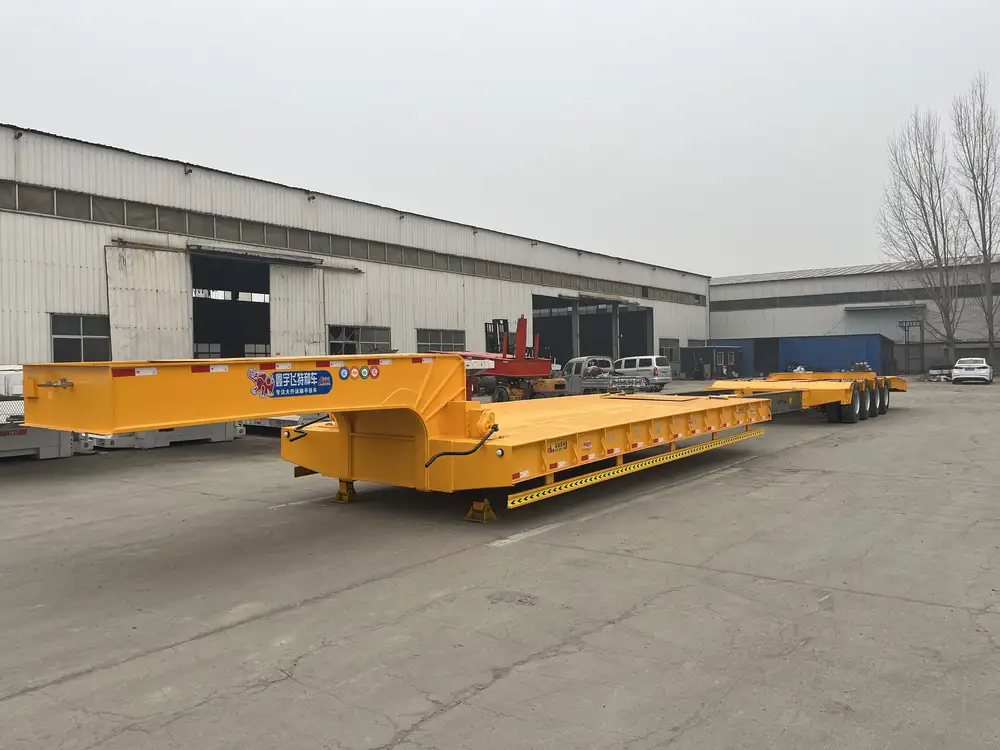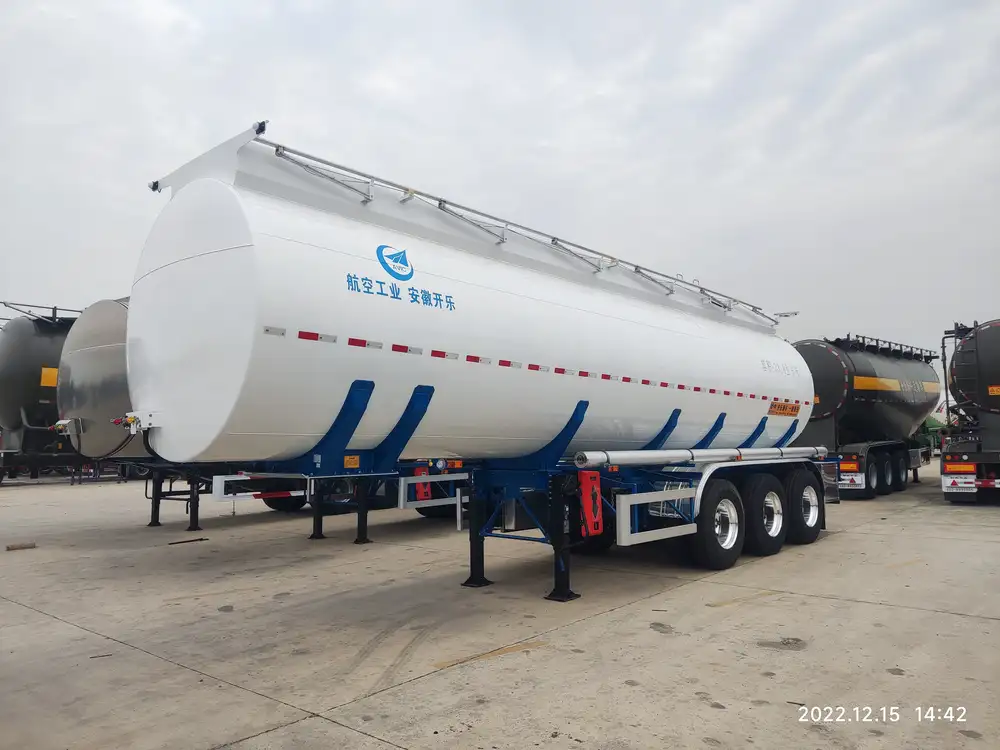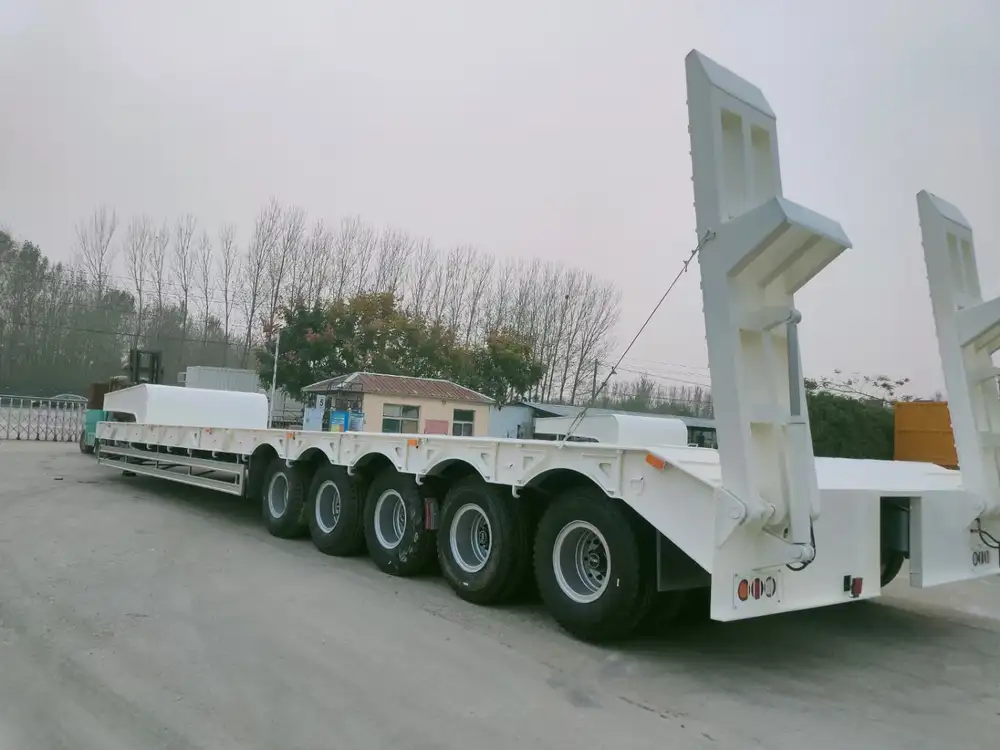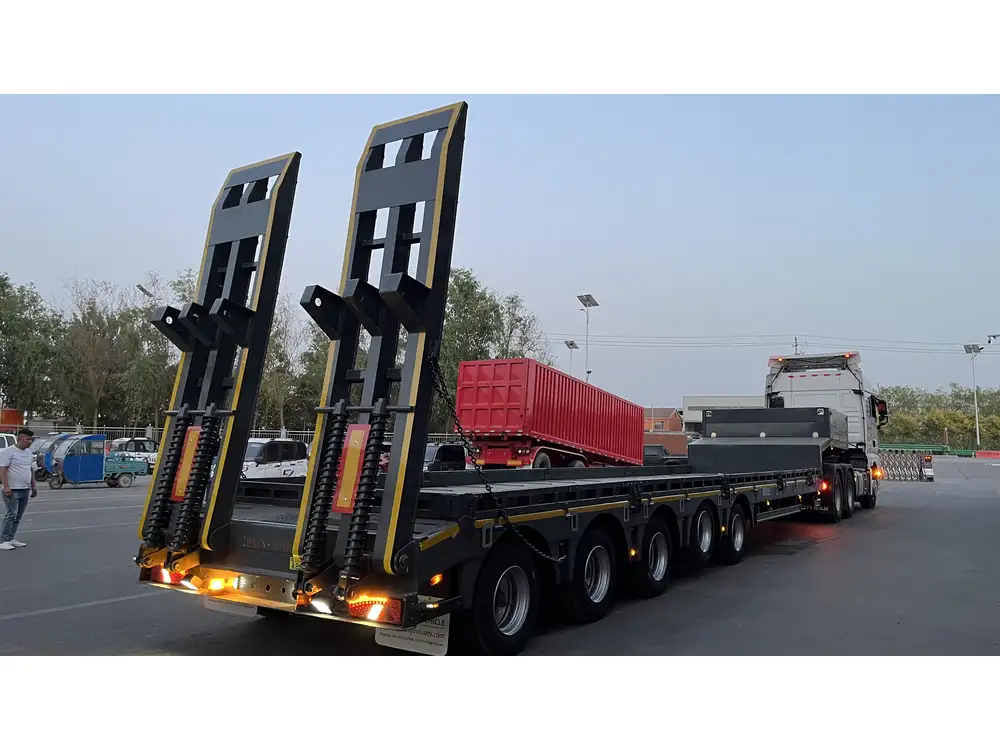When we consider the logistics of transportation, we inevitably stumble upon the significant role of semi-trailers. Understanding their dimensions is crucial not only for manufacturers but also for businesses that rely on freight transportation. Here, we delve deep into the dimensions, types, and regulations surrounding semi-trailers, shedding light on the query: How big is a normal semi-trailer?
Standard Dimensions of Semi-Trailers
Length
The length of a standard semi-trailer can vary depending on its type and intended use. However, most conventional semi-trailers in the United States adhere to the following specifications:
| Type of Semi-Trailer | Typical Length (feet) | Typical Length (meters) |
|---|---|---|
| Standard Dry Van | 48 to 53 | 14.6 to 16.15 |
| Flatbed | 48 to 53 | 14.6 to 16.15 |
| Refrigerated Trailer | 48 to 53 | 14.6 to 16.15 |
| Tanker | 40 to 53 | 12.2 to 16.15 |
Most often, the 53-foot trailer has become the industry standard due to its ability to maximize payload while adhering to federal regulations.

Width
Width is another important aspect. The generally accepted maximum width of a semi-trailer is 102 inches (8.5 feet or 2.59 meters) for freight transport in North America. However, specialty trailers designed for specific loads may exceed this width.
Height
The height of semi-trailers is typically around 13.5 feet (approximately 4.1 meters). This dimension is variable and can alter based on the trailer design or any added equipment, like air ride suspension systems. It’s crucial to note that height restrictions may come into play due to overpasses, bridges, and tunnels.
Capacity
Every trailer carries a different payload capacity, directly impacted by its dimensions:
- Standard Dry Van: Generally carries between 26,000 to 34,000 pounds (11,793 to 15,422 kg).
- Flatbed Trailers: Capacity often ranges around 48,000 pounds (21,772 kg) depending on the type of cargo being transported.
- Refrigerated Trailers: Commonly can haul a similar weight as standard dry vans but with a focus on perishable goods, emphasizing the importance of maintaining temperature.

Types of Semi-Trailers by Design
Understanding the size must also involve recognizing the different types of semi-trailers available in the market. The design influences both the dimensions and the adaptability for various loading scenarios.
1. Dry Van Trailers
The most common type of semi-trailer. It’s enclosed and protects cargo from weather-related issues.
2. Flatbed Trailers
These trailers have no sides or roof, allowing for easy loading and unloading of large or oversized cargo.

3. Refrigerated Trailers
Also known as reefers, these are insulated and equipped with refrigeration units, ideal for transporting perishable goods.
4. Tanker Trailers
Designed for transporting liquids, these semi-trailers may come with various capacities, often influenced by the fluid being carried.
5. Lowboy Trailers
Specialized for heavy loads. They have a lower deck, facilitating the transportation of oversized equipment and machinery.

Regulatory Framework Governing Dimensions
Federal Guidelines
In the U.S., the Federal Highway Administration (FHWA) establishes guidelines for semi-trailer dimensions to ensure safety and efficiency on the roads. Here are some key regulations:
- Length Limitations: While federal law permits longer combinations, many states have established stricter limits. For example, while 53 feet is allowed for trailers, multi-trailer combinations may impose lower restrictions.
- Width and Height Restrictions: Most states follow the federal guideline of 102 inches in width and 13.5 feet in height. States may have additional restrictions, particularly in urban areas.
Route-Specific Constraints
Transport regulations can vary based on the specific routes, such as highways versus local roads. Some areas may impose additional limits for oversized vehicles, requiring permits for travel.

State Regulations
Each state may have its own set of rules governing semi-trailer dimensions, including:
- Allowed weight limits
- Specific routes designated for oversized loads
- Additional height restrictions in urban settings
Importance of Proper Sizing
When selecting a semi-trailer, understanding the importance of accurate sizing is crucial for efficiency and regulatory compliance. Here’s why:
Cost Efficiency: An adequately sized semi-trailer optimizes cargo space, reducing the number of trips required to transport goods. This optimized transport leads to cost savings and improved service delivery.
Safety Considerations: Incorrect sizing can lead to hazardous transport situations. Overloaded trailers are more prone to accidents, resulting in financial and reputational damage for companies.
Legal Compliance: Staying within size and weight regulations avoids hefty fines and delays caused by equipment not meeting regulatory standards.
Common Challenges Related to Sizing
Several challenges can arise concerning the size of semi-trailers, including:
- Overweight Loads: Not just inconvenient, exceeding weight limits can jeopardize safety and lead to severe legal ramifications.
- Unauthorized Routes: Navigating through areas with specific restrictions requires planning, as failure to comply can result in hefty fines or legal consequences.
- Logistical Inefficiencies: Inaccurate sizing may lead to shipping delays, affecting delivery times and customer satisfaction.

Tips for Choosing the Right Semi-Trailer Size
Selecting the appropriate size for your semi-trailer isn’t just about following regulations—it’s about operational efficiency. Here are several tips to guide your decision-making process:
Analyze Cargo Types: Understand the nature of the goods you typically transport. If your cargo entails perishable items, a refrigerated trailer may be required. Heavy machinery necessitates a lowboy trailer for safe transport.
Monitor Weight Distribution: Efficiently calculating the weight distribution helps maintain vehicle balance, ensuring a smoother ride and enhancing safety on the road.
Consider the Route: Evaluate the transport routes. If your operation involves city driving or areas with lower bridges, it may be wise to opt for a standard height to avoid complications.
Seeking Expert Advice
When in doubt, consider consulting with logistics professionals or representatives from semi-trailer manufacturing companies. Their expertise can prove invaluable in selecting the right size for your needs, as they can offer insights crucial for both efficiency and compliance.
Conclusion
In conclusion, answering the question, “How big is a normal semi-trailer?” involves delving into the intricacies of dimensions, structural designs, and regulatory requirements. The typical dimensions of most semi-trailers include lengths around 48 to 53 feet, widths generally capped at 102 inches, and heights averaging 13.5 feet.
Understanding these factors aids in making informed decisions about transportation logistics. By recognizing the impact of the right semi-trailer dimensions on cost-efficiency, safety, and compliance, businesses can optimize their operations and enhance service quality.

FAQs About Semi-Trailer Dimensions
What is the maximum length allowed for a semi-trailer?
- Most states allow trailers of up to 53 feet in length for standard cargo.
Can semi-trailer sizes vary between states?
- Yes, regulations can differ significantly from state to state, impacting allowable dimensions and weight limits.
How can I ensure compliance with regulations on trailer sizes?
- Research state-specific regulations and consult with logistics professionals for tailored advice.
What factors influence a semi-trailer’s payload capacity?
- Factors include trailer design, materials, and weight distribution.
Is it possible to modify the size of my semi-trailer?
- Modifications can be made, but ensure that they adhere to federal and state regulations for safe and lawful usage.
In the context of semi-trailer manufacturing and transportation logistics, knowing the dimensions and requirements of trailers is instrumental in streamlining operations and ensuring compliance across the board. By keeping this comprehensive guide in mind, businesses can navigate the complexities of semi-trailer use effectively.



